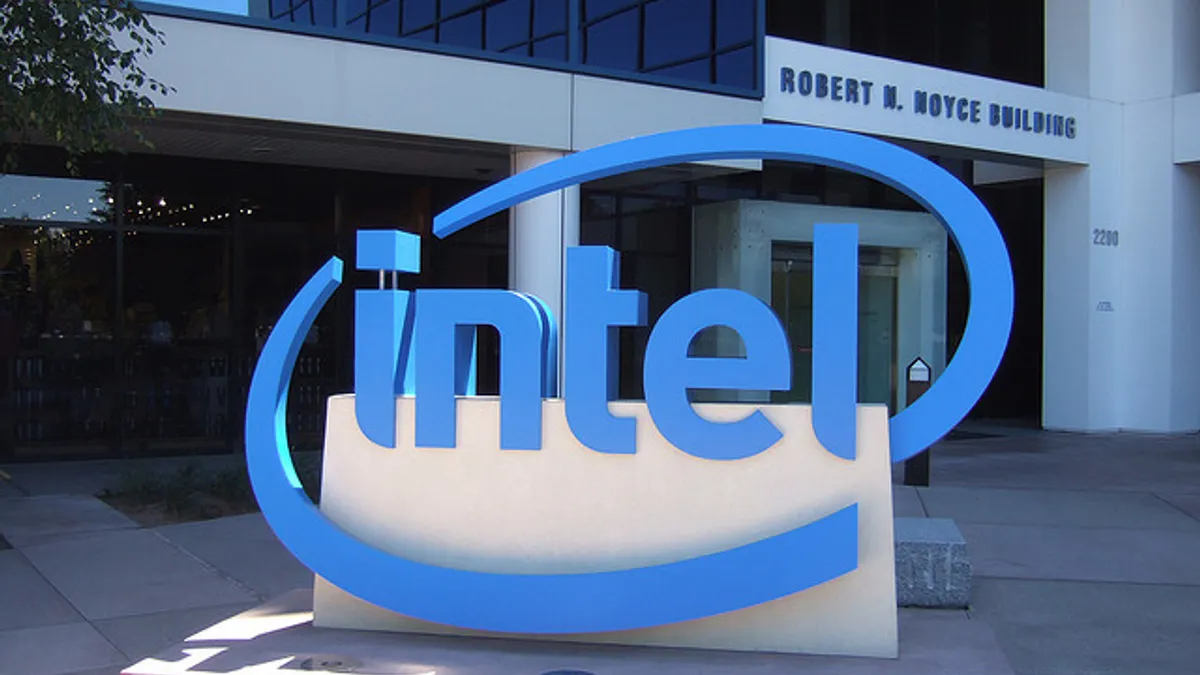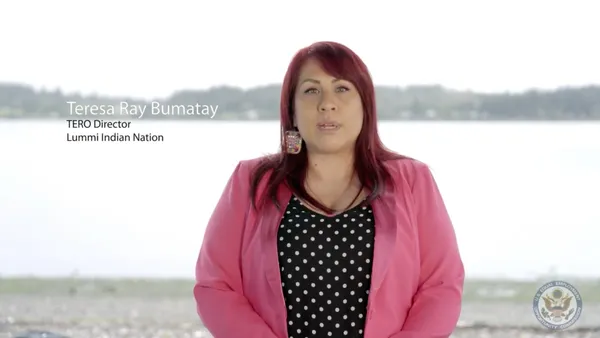Dive Brief:
- Intel committed to increasing representation of women in technical roles to 40% and doubling the number of women and underrepresented groups in senior leadership in the next 10 years, according to its annual Corporate Responsibility Report released May 14. The report was released along with the company's 2030 strategy and goals.
- From 2015 to 2019, the overall U.S. female representation at Intel increased by 6.9%. However, it slightly declined from 26.8% in 2018 to 26.5% in 2019, according to the company's December 2019 diversity and inclusion report. Meanwhile, the overall underrepresented employee representation increased in the same four-year period to 15.8%.
- Intel reported in January 2019 that it achieved gender pay equity and in 2018, two years ahead of its 2020 goal, the company said that it reached full representation in its U.S. workforce — a reflection of the percentage of women and underrepresented minorities available in the U.S. skilled labor market. Intel also said it will work with other tech companies to develop a Global Inclusion Index to create common language to discuss diversity and inclusion, and identify what's needed to build the future talent pipeline, according to the report.
Dive Insight:
Organizations that execute best practices in diversity, inclusion and equity, such as building a diverse talent pipeline, tend to do better financially. However, women and professionals of color are much less likely to hold leadership positions at some of the country's largest tech companies, according to both outside research and the release of diversity and inclusion employee data.
Twitter's diversity and inclusion report released in December 2019 showed a significant increase in the number of Latinx and black individuals it employs, but it said it needs improvement in women leadership. And while the hiring rate for full-time women engineers at Pinterest is at 27%, which exceeds a 25% goal, according to its January diversity and inclusion report, the tech company's leaders are majority male (75%) and white (64%). As a result, Pinterest has committed to a "laser focus" on specific efforts to diversify leadership by ensuring business leader ownership of inclusion and diversity outcomes and placing an emphasis on retention, Jo Dennis, the company's chief human resources officer, said in a blog post.
To reach its diversity in leadership goals, Intel will utilize its Inclusive Leaders program, which intends to foster leadership skills needed to "build diverse and inclusive, high-performing teams, "according to the report, and will seek to mitigate unconscious bias in the hiring process. Intel is also focusing on mentoring through its more than 30 Employee Resource Groups (ERGs) and seven leadership councils.
ERGs have emerged as a key way to keep employees included and connected during the COVID-19 pandemic. ADP, for example, has relied on its 10 business resource groups to foster meaningful engagement. "During this time of uncertainty, the role business resource groups serve in a company's culture has really been underscored," Aisha Thomas-Petit, the chief diversity, inclusion and corporate social responsibility officer at ADP, told HR Dive in a recent interview. "They provide the workforce with professional and personal support and help bring people together around shared causes."
ERGs can also be as part of a company's succession planning. Research shows that high-performance organizations view ERGs as strategic leadership development incubators.














